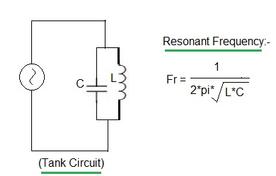
Impedance Matching: Circuits, Methods, and Devices
Explore impedance matching circuits (L networks, Pi networks) and devices (baluns, stubs, quarter-wave transformers) for maximum power transfer in RF systems.
Showing 25 posts (Page 1 of 2)
Advertisement

Explore impedance matching circuits (L networks, Pi networks) and devices (baluns, stubs, quarter-wave transformers) for maximum power transfer in RF systems.
Prepare for RF circuit design interviews with these 10 questions and answers covering fundamental concepts, impedance matching, and essential components.

Explore 3dB and 6dB attenuator circuit designs using Pi and T configurations with resistor values. Learn about impedance matching and signal level adjustment in RF circuits.

Explore the key differences between active and passive baluns for high-frequency circuits, their advantages, disadvantages, and applications.

Explore coplanar waveguide (CPW) transmission lines, covering structure, functionality, advantages like ease of fabrication, and disadvantages such as surface wave losses.

Explore the fundamentals of a crystal radio receiver, its circuit components, and how it operates to receive radio signals.

Learn about DC blocks, their function in RF circuit design to prevent DC voltage interference, and the different types available.

This article compares Dickson and Cockcroft-Walton voltage multipliers, highlighting their differences, advantages, and disadvantages in RF applications.
Understand the difference between electrical length and physical length in RF circuits. Learn how to calculate physical length based on electrical length and dielectric properties.

Explore RF switch circuits using FET and PIN diodes for signal control. Learn about their operation, diagrams, and use cases in RF systems, offering low loss and high isolation.
Explore the pros and cons of Hybrid Microwave Integrated Circuits (HMICs), focusing on component performance, loss, power handling, and design flexibility.

Explore the LC tank circuit calculator, understand its basics, and learn about the resonant frequency formula for RF tuning and filtering applications.

Explore the fundamental differences between low frequency (LF) and high frequency (HF) tuners, including their circuits and operating principles.
Explore the key differences between microstrip lines and coplanar waveguides (CPW) for RF circuit design, covering dispersion, losses, coupling, and design flexibility.

Explore microwave isolators: passive devices enabling one-way signal flow, protecting sensitive components from reflections in RF and microwave systems.

Explore the advantages and disadvantages of Pi filter circuits, including their applications as low pass and high pass filters in RF circuit design.

Explore PIN diode characteristics and circuit designs for RF switches and attenuators. Learn how PIN diodes are used to control RF power in microwave circuits.

Explore the functionality of power dividers and combiners in RF circuits. Learn how they work, their reciprocity, and how they are used.

Explore the concept of resonant circuits, including series and parallel configurations, their characteristics, and diverse applications in RF, audio, and more.

Explore RF choke coils: essential inductors blocking high-frequency signals while allowing DC/low-frequency currents. Learn about their uses and manufacturers.

Explore advantages and disadvantages of RF isolators, including their function, types, and applications in protecting equipment and stabilizing signal sources.

Explore RF mixers: their functions, equations, types (additive, subtractive, multiplicative), specifications, and applications in communication and radar systems.

Explore the pros and cons of using RF mixers in electronic circuits, including frequency conversion, signal loss, and noise figure.

Explore RF transformers: selection guide, key parameters, benefits in RF design, and leading manufacturers for optimal performance.

Explore RLC tank circuits: Understand how resistors, inductors, and capacitors work together to control resonant frequency, bandwidth, and Q-factor.
Advertisement